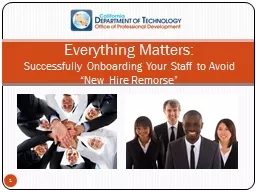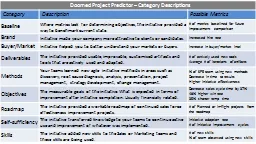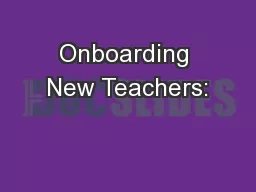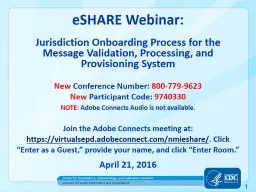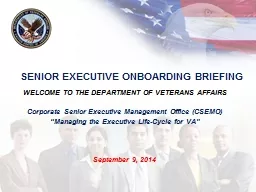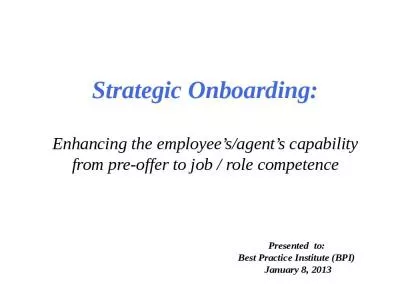PPT-Everything Matters: Successfully Onboarding Your Staff to Avoid “New Hire Remorse”
Author : pamella-moone | Published Date : 2018-10-29
1 Todays Topics Why onboard Onboarding defined Onboarding versus orientation Your new staffs psychology What about those millennials Onboarding best practices Handling
Presentation Embed Code
Download Presentation
Download Presentation The PPT/PDF document "Everything Matters: Successfully Onboard..." is the property of its rightful owner. Permission is granted to download and print the materials on this website for personal, non-commercial use only, and to display it on your personal computer provided you do not modify the materials and that you retain all copyright notices contained in the materials. By downloading content from our website, you accept the terms of this agreement.
Everything Matters: Successfully Onboarding Your Staff to Avoid “New Hire Remorse”: Transcript
Download Rules Of Document
"Everything Matters: Successfully Onboarding Your Staff to Avoid “New Hire Remorse”"The content belongs to its owner. You may download and print it for personal use, without modification, and keep all copyright notices. By downloading, you agree to these terms.
Related Documents

